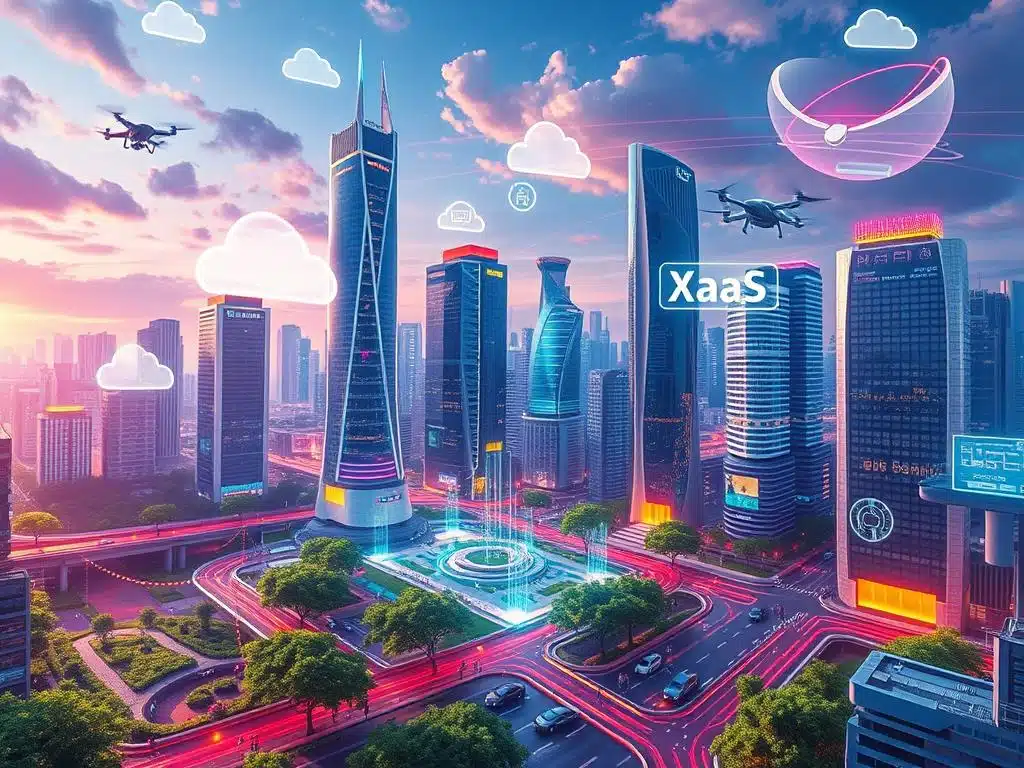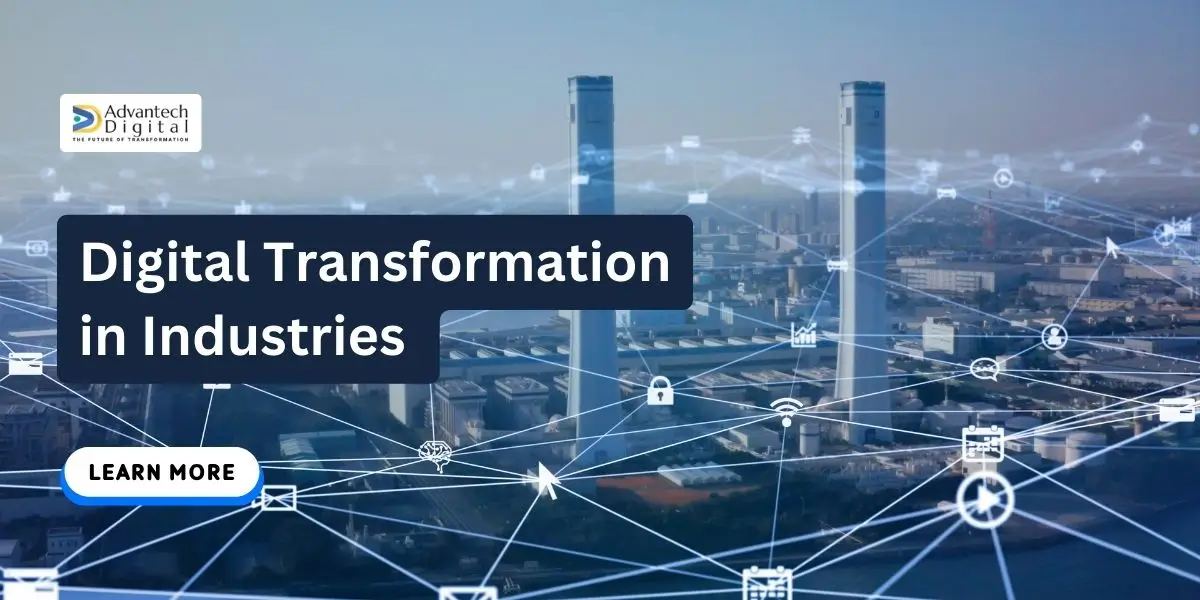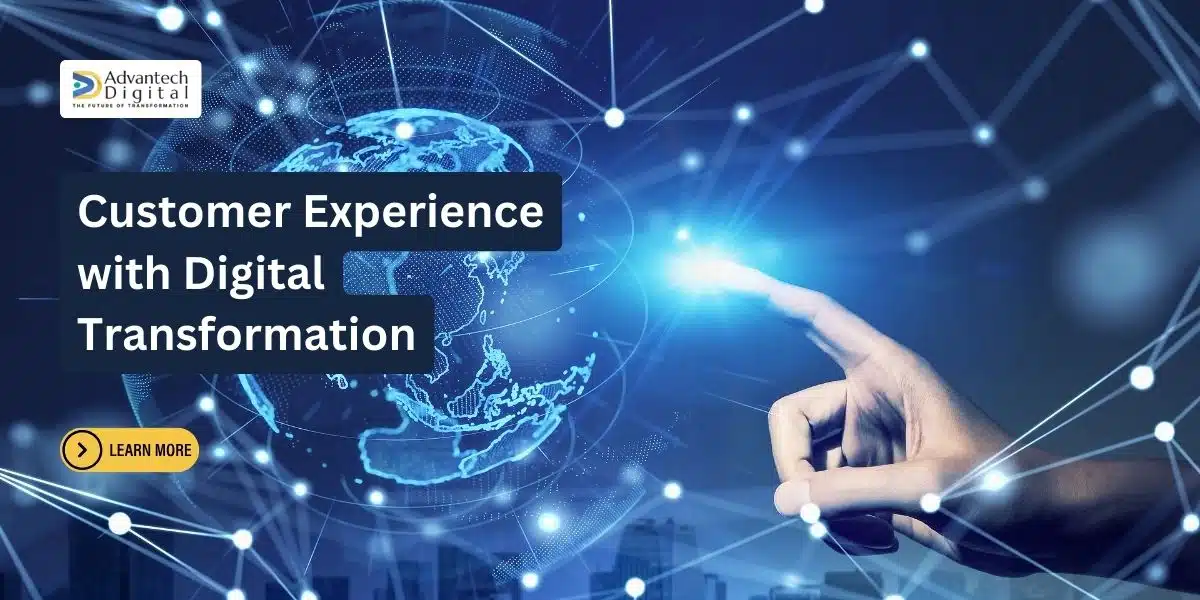Digital transformation challenges in today’s world loom large for businesses in 2025. Staying competitive demands a proactive approach to emerging technological innovation and changing consumer expectations. Success hinges on integrating AI, leveraging data analytics, prioritizing sustainability, and building resilience.
Key digital transformation trends will shape the business landscape in 2024–2025. Organizations must integrate legacy systems with cutting-edge solutions. They need strategies aligned with evolving consumer demands and regulatory requirements.

By 2025, the global digital transformation market is set to hit $1,009.8 billion. This represents a 16.5% CAGR from 2020. AI, AR/VR, and IoT drive this growth, along with enhanced customer experiences and streamlined operations.
The market’s potential is immense. Projections show it surpassing $3,810.05 billion by 2030. This underscores the critical importance of embracing digital transformation strategies for business success.
Key Takeaways
- Integrating generative AI into strategic planning to enhance business models will be crucial for businesses in 2025.
- Developing circular economies for sustainable business practices, influenced by regulatory pressure and consumer demand, will be a key driver of change.
- Customer experience (CX) will be a critical differentiator, with personalized experiences and omnichannel strategies gaining importance.
- Building resilience in the face of uncertainty, such as supply chain issues and economic fluctuations, will be a key focus for businesses in 2025.
- The global digital transformation market is projected to reach $1,009.8 billion by 2025, with a CAGR of 16.5% from 2020.
Embracing Tech-Driven Sustainability for Business Success
Tech-driven sustainability is crucial for long-term business success. Innovative technologies help companies reduce environmental impact and increase profitability. They also meet the growing demands of eco-conscious consumers and employees.
Lowering Environmental Impact and Increasing Profitability
Sustainable practices powered by technology can lead to significant cost savings. Energy-efficient systems and renewable energy sources reduce utility expenses. Data analytics and AI optimize supply chains, minimizing waste and improving resource allocation.
These improvements result in increased profitability for businesses. Companies can see substantial benefits from implementing tech-driven sustainability measures.
Reaping Benefits from Governmental Policies and Investor Trends
Companies with high ESG scores often enjoy lower capital costs and bidding advantages. They also attract increased investor attention. Governmental policies increasingly favor businesses that prioritize sustainability.
By embracing tech-driven sustainability, organizations can capitalize on these trends. This strategic move positions them for future success in a changing business landscape.
Consider the following statistics:
- Companies leveraging technologies such as AI-driven chatbots have seen increased customer satisfaction and loyalty.
- Adoption of blockchain technology has led to streamlined supply chains, ensuring greater transparency and efficiency for many organizations.
- Organizations with a thorough change management strategy are six times more likely to meet or exceed digital transformation objectives.
Catering to Eco-Conscious Consumers and Employees
Sustainability is a priority for consumers and employees in decision-making processes. Electronics recycling programs and zero-waste policies boost employee engagement. These initiatives demonstrate a company’s commitment to sustainability.
By catering to eco-conscious stakeholders, businesses enhance their brand reputation. They also attract top talent, further strengthening their position in the market.
| Strategy | Impact |
|---|---|
| Energy-efficient systems | Reduced utility expenses |
| AI-driven supply chain optimization | Minimized waste and improved resource allocation |
| Electronics recycling programs | Boosted employee engagement and sustainability awareness |
Embracing tech-driven sustainability is not just a matter of corporate responsibility; it is a strategic imperative for businesses to thrive in the face of changing consumer preferences, investor trends, and governmental policies.
Harnessing the Power of Generative and Analytical AI
Generative AI and analytical AI are revolutionizing the business world. Companies integrating these technologies enterprise-wide unlock innovation, efficiency, and data-driven decision-making opportunities. This integration gives businesses a competitive edge in today’s fast-paced market.
Moving from Isolated AI Projects to Enterprise-Wide Integration
Enterprise-wide AI integration surpasses isolated projects in potential. This approach creates a seamless flow of data and insights across departments. It leads to better decision-making and improved operational efficiency throughout the organization.
Leveraging Generative AI for Innovative Solutions
Generative AI, powered by advanced machine learning, creates innovative solutions and personalized customer experiences. It enables rapid ideation and prototyping of new products and services. This technology helps companies maintain their competitive edge in various industries.
| Industry | Generative AI Application | Benefits |
|---|---|---|
| Telecom | Streamlining user story definition | Accelerated time-to-market |
| Retail | Transcribing and summarizing customer interactions | Faster issue resolution |
| Healthcare | Generating artificial patient data for disease prediction models | Improved handling of rare disorders |
Utilizing Analytical AI for Data-Driven Insights
Analytical AI excels at processing vast amounts of data and uncovering hidden patterns. It generates valuable insights for data-driven decision-making and operational optimization. For instance, a commercial bank used analytical AI to identify anomalies in transaction records.
Streamlining Processes with Intelligent Automation
Intelligent automation revolutionizes business operations by streamlining repetitive tasks and processes. It enhances efficiency, reduces costs, and minimizes human error across various functions. This allows employees to focus on higher-value tasks, driving innovation and growth.
Generative AI is a transformative force across industries, enabling businesses to automate tasks, enhance customer interactions, and make data-driven decisions.
Embracing enterprise-wide AI integration is crucial for success in the digital age. Leveraging generative AI for innovation and analytical AI for insights drives business growth. Streamlining processes with intelligent automation positions companies for success in the evolving business landscape.
Adapting to the Everything as a Service (XaaS) Landscape
The Everything as a Service (XaaS) model revolutionizes the digital business world. XaaS offers a range of service-based offerings, from software to infrastructure as a service. This shift provides businesses with enhanced flexibility, scalability, and cost-effectiveness.
XaaS includes SaaS, IaaS, PaaS, FaaS, BaaS, SECaaS, and various DaaS options. These service-based models transform how businesses operate and compete in the digital marketplace.
Understanding the Implications of XaaS for Clients and Providers
Businesses adopting XaaS should assess needs, start small, and prioritize integration. Focus on security and team training to ensure a smooth transition. XaaS providers must understand the market and embrace agile development.
Prioritizing user experience, building for scalability, and implementing robust support are crucial for XaaS providers. These factors contribute to successful service offerings and customer satisfaction.
XaaS brings benefits but also challenges. These include managing diverse data sources, ensuring precision, and maintaining operational resiliency. Security concerns, vendor dependence, and customization limitations are additional hurdles to consider.
Assessing Operations for Service Transformation Opportunities
To leverage XaaS, businesses must evaluate their operations and identify service transformation opportunities. This involves assessing existing processes and developing an implementation roadmap. Embracing XaaS allows businesses to focus on core competencies while accessing cutting-edge technology.
Developing Subscription-Based Pricing Models
Adapting to XaaS requires developing subscription-based pricing models. These models offer businesses greater flexibility and cost predictability. Consider usage patterns, scalability requirements, and customer preferences when designing pricing structures.
| XaaS Model | Examples | Benefits |
|---|---|---|
| SaaS | Gmail, Microsoft Office 365, Salesforce | Accessibility, convenience, and cost savings |
| IaaS | Amazon Web Services (AWS), Microsoft Azure, and Google Cloud Platform (GCP) | Scalability, flexibility, focus on core competencies |
| PaaS | Heroku, Google App Engine, Microsoft Azure App Service | Rapid development, simplified deployment, reduced infrastructure management |
The future of XaaS is expected to grow driven by increasing demand for flexible solutions, cloud computing and IoT advancements, and the need for business agility.
XaaS adoption will likely accelerate as businesses embrace digital transformation. Understanding implications, assessing operations, and developing pricing models are key to success. These strategies unlock new avenues for growth and innovation in the XaaS landscape.
Implementing Multi-Layered Cybersecurity Strategies
Businesses face increasing cyber threats in our digital world. A multi-layered cybersecurity strategy is vital to protect assets and data. Over 60% of organizations experienced cyber attacks last year. The average cost of a data breach reached $4.24 million.
A holistic approach is necessary to combat these threats. This includes AI-powered security, employee training, and zero-trust architecture. Cloud and IoT security are also crucial. Investing in cybersecurity solutions can reduce cyber incident risks by 40%.
Technology alone isn’t enough. Human error causes 95% of cybersecurity breaches. Comprehensive employee training is critical in any multi-layered security strategy. Zero-trust architecture is another essential aspect. It makes the supposition that no user or device is trustworthy by default.
Strict access controls and continuous monitoring are required. This model significantly reduces breach risks. Poor access controls are linked to 60% of breaches. As businesses rely more on cloud services, securing these systems is paramount.
In 2022, 49% of organizations reported cloud security breaches. Additionally, 54% experienced incidents involving industrial control systems. To mitigate these risks, prioritize cloud security measures. Ensure all IoT devices are properly secured and monitored.
| Cybersecurity Strategy | Potential Risk Reduction |
|---|---|
| Multi-layered security approach | 70% |
| Security awareness training for employees | 70% (phishing attacks) |
| Comprehensive security training for employees | 53% (breach costs) |
| Compliance protocols | 43% (lower breach cost) |
Global cybercrime costs are predicted to hit $10.5 trillion annually by 2025.
The cost of neglecting cybersecurity is too high. A multi-layered approach combining technology with human-centric strategies is essential. This protects businesses from growing cyber threats. Prioritizing cybersecurity is crucial for our digital future.
Overcoming the digital transformation challenges in today's world
Businesses face complex challenges as they embrace digital transformation. These include technological risks, data security concerns, and potential job impacts. Gartner reports 91% of organizations are engaged in digital initiatives. Global investment is projected to reach $2.8 trillion by 2025.
However, BCG finds 70% of these programs fail to meet their goals. This leads to substantial costs in money, effort, and time. Organizations must overcome resistance to change within their culture.
Talent shortages and skill gaps pose significant hurdles in digital technology adoption. KPMG found 44% of organizations reported talent gap issues hindering progress. 32% highlighted costly new talent and system additions. 29% emphasized skill shortages causing implementation delays.
Organizations must address these skill gaps to succeed in their digital transformation efforts. Investment in employee training and development is crucial.
Addressing Technological Risks and Data Security Concerns
Organizations must protect against data breaches, cyber-attacks, and privacy lapses. These incidents can damage reputations, incur legal consequences, and erode customer trust. Ensuring data security and compliance is critical during digital transformation.
Companies must invest in robust cybersecurity measures. They should stay informed about regulations across industries and jurisdictions. This proactive approach helps mitigate risks associated with digital initiatives.
Mitigating the Impact on Human Jobs and the Future of Work
Rapid digital technology adoption raises concerns about job displacement. Organizations must balance technological advancements with workforce support. This involves providing training and upskilling opportunities to bridge digital skill gaps.
Fostering a culture of continuous learning is essential. Companies should explore new roles that complement digital technologies. Engaging in open dialogue with employees about the future of work is crucial.
- Providing training and upskilling opportunities to bridge the digital skill gaps
- Fostering a culture of continuous learning and adaptability
- Exploring new roles and responsibilities that complement digital technologies
- Engaging in open dialogue with employees about the future of work
| Challenge | Impact | Solution |
|---|---|---|
| Resistance to change | Delays in implementation | Change management initiatives |
| Skill gaps | Inability to leverage new technologies | Training and upskilling programs |
| Data security | Reputational damage and legal consequences | Robust cybersecurity measures |
| Job displacement | Employee anxiety and resistance | Reskilling and new role exploration |
Satya Nadella, CEO of Microsoft, states, “Digital transformation is not just about technology. It’s about people, culture, and processes.” Addressing these challenges head-on enables successful and sustainable digital transformation. This approach benefits both businesses and their workforce.
Delivering Hyper-Personalized, Friction-Free Customer Experiences
By 2025, hyper-personalized customer experiences will set businesses apart. AI and data analytics enable deeper customer insights and personalized interactions at scale. This approach boosts satisfaction and revenue growth. Companies improving customer experience report an 84% increase in revenue.
Leveraging AI and Data Analytics for Deeper Customer Insights
AI and data analytics are crucial for hyper-personalized experiences. Analyzing customer data reveals individual preferences and behaviors. This enables tailored interactions. 59% of customers value engagement based on past interactions when choosing a business.
| Technology | Benefits |
|---|---|
| Infosys AsterTM | Integrates over 400 marketing assets, leveraging AI to intelligently automate marketing functions |
| Infosys TopazTM | Includes over 12,000 AI assets and more than 150 pre-trained AI models to amplify marketing functions ethically and effectively |
Balancing personalization and privacy is essential. 79% of customers will share information for contextualized interactions. However, 57% feel uneasy about how companies use their data. Businesses must prioritize transparency and security to build trust.
Implementing Omnichannel Strategies for a Unified Brand Experience
Companies need omnichannel strategies for seamless transitions between online and offline touchpoints. Digital tools in restaurants and foodservice offer improved convenience and reduce friction for guests. Consistent experiences across channels foster customer trust and loyalty.
“76% of consumers prefer to buy from companies that offer personalization.”
Hyper-personalization benefits are clear. Customer experience leaders outperform laggards by nearly 80%. Customer-centric companies are 60% more profitable than those ignoring customers. Investing in AI and data analytics for personalized experiences drives long-term growth and success.
Building Resilience in the Face of Economic Uncertainty
Companies need resilience to navigate today’s volatile business landscape. Building resilience is crucial for success amid economic uncertainty. Harvard Business Review suggests maintaining a six-month cash buffer for operating expenses. Agile practices like dynamic supply chains help organizations respond to unexpected challenges.
Scenario planning helps businesses anticipate risks and develop proactive strategies. Diversifying products, markets, and revenue streams reduces dependency on a single income source. During COVID-19, many restaurants adapted by introducing takeaway and delivery services.
Digital transformation is key to building resilience. Digitally advanced companies improve efficiency and create flexible operations. Agile methodologies promote adaptability and responsiveness to changing conditions. Customer-centric innovation addresses evolving preferences, leading to above-average revenue growth rates.
| Resilience Strategy | Benefits |
|---|---|
| Cash Buffer | Covers operating expenses during economic shocks |
| Agile Practices | Enables swift response to unexpected challenges |
| Diversification | Reduces dependency on a single income source |
| Digital Transformation | Improves efficiency and creates flexible operations |
Partnerships and alliances provide additional resources and capabilities. They enhance resilience, reduce costs, and create new business opportunities. Collaborations within industry ecosystems lead to shared knowledge and synergies. Resilient businesses empower their people to innovate and contribute to organizational success.
Resilient businesses empower their people to take ownership, innovate, and contribute to the organization’s success.
Establishing a cost management framework helps control financial resources. It enables adjustments in response to challenges. Regular monthly financial reviews spot early warning signs and guide plan adaptations. Focusing on sustainable profitability positions companies to weather economic uncertainty.
Navigating Changing Consumer Behaviors and Expectations
Businesses must adapt to evolving consumer behaviors to stay competitive. Online shopping, mobile dominance, and social media influence have reshaped customer expectations. To succeed by 2025, companies need to focus on Gen Z preferences and sustainability.
Developing strong omnichannel engagement strategies is also crucial. These approaches will help businesses meet the demand for seamless, personalized experiences across all touchpoints.
Digital transformation helps 35% of executives meet customer expectations better. It also improves operational efficiency. Companies investing in digital transformation are 23% more likely to gain new customers.
As consumers become more tech-savvy, their demands increase. Businesses must use data and analytics to understand customer preferences and deliver personalized experiences.
Catering to the Unique Preferences of Gen Z Consumers
Gen Z, born between the mid-1990s and early 2010s, will be the largest consumer group by 2025. This tech-savvy generation has distinct expectations from brands. To appeal to Gen Z, businesses must embrace authenticity, diversity, and social responsibility.
Creating engaging, short-form content on platforms like TikTok and Instagram is essential. This approach helps capture Gen Z’s attention and foster loyalty.
Prioritizing Sustainability and Transparency in Business Practices
Sustainability and transparency are increasingly important to consumers, especially younger generations. A recent survey found that 73% of Gen Z consumers will pay more for sustainable products.
Companies focusing on eco-friendly practices and open communication gain an edge. Embracing circular economy principles and partnering with environmentally conscious suppliers helps meet the demand for sustainable offerings.
Developing Robust Omnichannel Engagement Strategies
Consumers interact with brands across multiple touchpoints. A seamless omnichannel engagement strategy is vital for success. Companies must ensure consistent brand experiences across all channels, including websites, apps, social media, and stores.
Using data and analytics provides a holistic view of customer interactions. This insight enables businesses to deliver personalized content and offers through the right channels at the right time.
Adapting to changing consumer behaviors is key for future success. Companies that cater to Gen Z, prioritize sustainability, and develop strong omnichannel strategies will thrive beyond 2025.
Conclusion
Businesses must embrace a fundamental shift to thrive in the rapidly evolving digital landscape. The challenges of technological advancements and changing consumer behaviors demand a proactive approach. Organizations need to prioritize continuous learning and foster innovation to succeed.
Leveraging AI, data analytics, and emerging technologies can unlock new growth opportunities. It enhances customer experiences and drives sustainable growth. Studies show that digital transformation increases revenue and improves decision-making for many businesses.
Digital transformation streamlines processes, reduces costs, and increases efficiency through automation. It enables remote work and allows quicker responses to market changes. Developing a clear roadmap for transformation positions businesses for long-term success.
Staying agile and committed to improvement is crucial for businesses. Investing in employee skills and fostering innovation helps navigate transformation challenges. The future favors those who embrace change and harness technology’s power.
Frequently Asked Questions
What are the top digital transformation challenges businesses face in 2025?
How can businesses benefit from embracing tech-driven sustainability?
What is the importance of moving from isolated AI projects to enterprise-wide integration?
How can businesses adapt to the Everything as a Service (XaaS) landscape?
Why is a multi-layered approach to cybersecurity essential in the digital age?
How can businesses address the impact of digital transformation on human jobs and the future of work?
What role does customer experience (CX) play in the competitive landscape of 2025?
How can businesses build resilience in the face of economic uncertainty?
What are the key considerations for businesses navigating changing consumer behaviors and expectations in 2025?
What mindset and operational shifts are necessary for successful digital transformation in 2025?














2 thoughts on “Top Digital Transformation Challenges for Businesses in 2025”
Comments are closed.